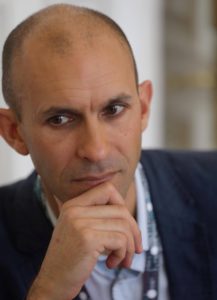
Anil Seth is Professor of Cognitive and Computational Neuroscience at the University of Sussex and author of the bestselling book Being You: A New Science of Consciousness. His research brings together many different disciplines, from neuroscience to philosophy to computer science to physics, to explore the biological basis of consciousness and the implications of this research for medicine, technology, and society.
From beast machines to dreamachines
Consciousness remains one of the central mysteries in science and philosophy. In this talk, I will explore how viewing the brain as a ‘prediction machine’ can help build bridges from neural mechanisms to properties of conscious experience – dissolving, not solving, the so-called hard problem of consciousness. I will first show how conscious experiences of the world around us can be understood in terms of perceptual predictions, before exploring how the experience of being an embodied self can be understood in terms of predictive regulation of the body. In this view, and contrary to the old doctrine of Descartes, we are conscious because we are ‘beast machines’. I’ll finish by describing a recent art-science collaboration – the dreamachine – which involves mass stroboscopically-induced visual hallucinations and a large-scale online survey of ‘perceptual diversity’ – The Perception Census.

